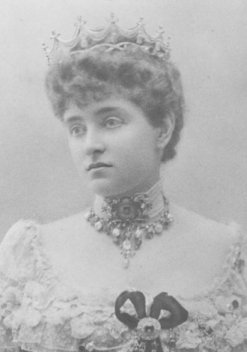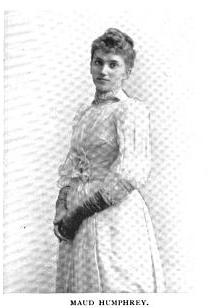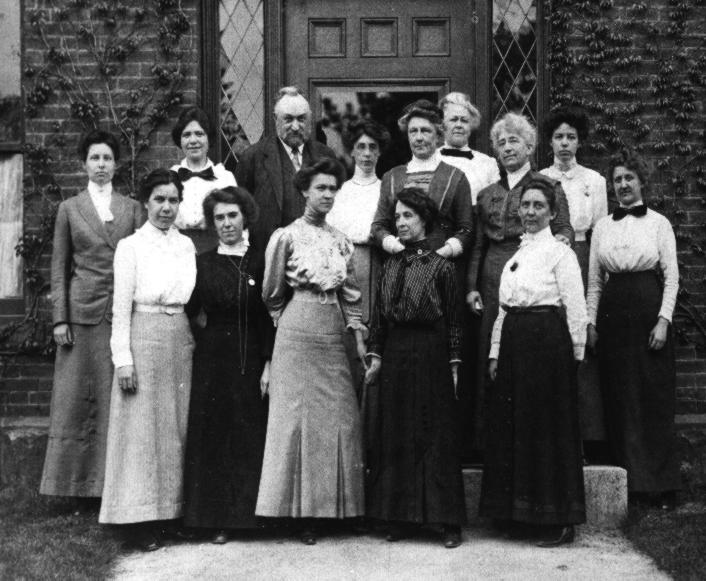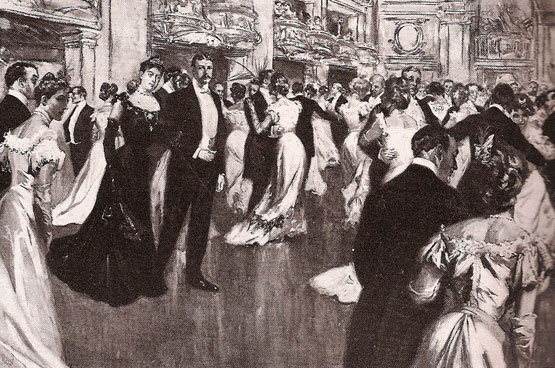
The life of Victoria Sackville-West is fascinating and scandalous. She was the illegitimate daughter of Lionel Sackville-West, a diplomat, and his Andalusian mistress, Josefa Duran, a dancer known as “Pepita.” Over the course of their nineteen year affair (never legalized, since Pepita’s estranged husband outlived her), conducted around the diplomatic capitals of Europe, they produced five children–two sons, Max and Henry, and three daughters, Victoria, Flora, and Amalia. When Victoria was three, Lionel purchased a home in the south of France for his growing family, and there he visited his mistress and children four or five times a year. Though acknowledged by their father, Victoria and her siblings lived in limbo, unable to play with neighborhood children because of their illegitimacy, yet possessing a comfortable lifestyle which would have normally accorded them entree into good circles.
When Pepita died in childbirth in 1871, Lionel’s secret life began to unravel, primarily when his family, from whom he borrowed heavily, discovered why loans were secured. He escaped to Buenos Aires as British Minister to Argentina and the children were taken in by a French family. Victoria was then educated at the Convent of St Joseph in Paris, where she graduated seven years later with a certificate enabling her to work as a governess. In 1880, Victoria and her siblings came to England (with the exception of the eldest boy Max, who was sent to South Africa), where they were abruptly told of their illegitimate birth. There they met their father’s powerful family: Uncle Reginald (the Earl De La Warr), Uncle Mortimer (Baron Sackville), Aunt Bessie (Duchess of Bedford), and Aunt Mary (Countess of Derby). The Sackville-West family was not pleased with the existence of half-Spanish illegitimate nieces and nephews, but family was family (though the children were not allowed to meet anyone during visits to their aunts and uncles homes, and Aunt Mary advised them to drop Sackville from their name and go by plain West).
It was Aunt Mary, however, who saw something special in the nineteen year old Victoria. Lady Derby secured the support of Foreign Secretary, Lord Granville, and Queen Victoria to have Victoria sent to Washington as hostess to her father Lionel, who had been recently appointed as British Minister to the United States. After the obtaining the approval of First Lady Mrs. Garfield and her committee, consisting of the wives of the Secretary of State, Under-Secretary of State, and the leading Republican senator, Victoria traveled across the Atlantic in 1881 and was an instant hit with Washington society. Though she spoke little English at first and was ill-educated for the role, Victoria had plenty of charisma and good manners, which saw her through seven seasons as her father’s hostess, and she attracted dozens of marriage proposals.
Their tenure in Washington ended in 1888, when Lionel was embroiled in a political controversy over the writing of the “Murchison letter” and he was forced to resign his post. This was a blow to Lionel’s diplomatic career, but not too harsh, for he unexpectedly inherited the title of Baron Sackville and the enormous manor home, Knole, which came with it. Victoria fell in love with Knole at first sight and threw herself headfirst into the running of the house. However, she faced a dilemma when she met her cousin Lionel (her father was called “Old Lionel” to distinguish between the two), who was five years her junior and who fell desperately in love with her. Victoria had a serious suitor in the Marquis de Loys Chandieu, but cousin Lionel would both legitimize her name and keep Knole in her control when he inherited from her father. Marriage to Lionel also had the approval of her extended family, whose cool reception upon first meeting Old Lionel’s children still stung. With this pressure behind her, Victoria did the sensible thing and accepted her cousin’s proposal.
Victoria and Lionel married June 17, 1890 and surprisingly (or perhaps not…?) their marriage began with mutual passion. Victoria’s coded diaries full of where, how often, and when they made love. Their daughter Vita was born in 1892, but was to be their only child, for Victoria found the process of childbirth horrifying. Under Victoria’s direction, Knole moved into the dawning twentieth century with the installation of a telephone, of electricity, central heating, and bathrooms with running water. In the Edwardian era, an invitation to Knole for a Saturday to Monday was highly sought-after, though the glittering social life was a facade as the income derived from the land fell considerably. The Sackvilles sold paintings to fill up their dwindling coffers and Victoria proved to have a knack for finance, forming friendships with influential men from the City.
However, a bombshell was thrown in their midst when her brother Henry claimed to own papers proving his legitimacy and status as heir to the barony and to Knole. The court case tore the siblings apart and was not legally resolved until years after Old Lionel’s death in 1908. In the meantime, Victoria had to deal with her legal scandal, when close friend and confidant Sir John Murray Scott, known as “Seery,” died and left her £150,000 and the contents of his house in Paris.
Though the larger part of Seery’s £1,180,000 fortune was divided between his siblings, they contested the will, accusing Victoria of wielding undue influence over him and alienating him from his family. The case came to court in June of 1913 and was a social spectacle, with aristocratic ladies filling the public gallery and snacking on food brought in luncheon hampers during the eight day case. The alluring Victoria dazzled and amused the jurors, giving a performance worthy of an Oscar or BAFTA, and she was of course, found not guilty of fraud or coercion. Today, Victoria Sackville-West is overshadowed by her daughter Vita’s literary output, but even to Vita, despite their difficult relationship in later years, her mother reigned supreme and incredibly fascinating.
Further Reading:
Inheritance: the Story of Knole and the Sackvilles by Robert Sackville-West
Lady Sackville by Mary Alsop




Perfect timing 🙂 I know quite a lot about the adult woman that Sackville-West became, her garden designs and taste in architecture, her marriage and published works. But I knew sod all about her childhood. What an amazing and rather scary story.
Glad to oblige, Hels. *g* Victoria was a character alright. But I was very fascinated by her love life with Lionel–really throws all notions of “lie back and think of England” out the window, doesn’t it?
Ooh Evangeline, I was wondering when you were going to write about Vita’s mother. Something about the Sackville-West women. Victoria’s cousin, Idina, daughter of the Earl De La Warr, is the subject of a great book The Bolter by her great-grand daughter.
I’d been meaning to write about Victoria after reading the Alsop bio a year ago, but the bio about Knole, written by the current Lord Sackville, further piqued my interest. And yes! Those Sackville women were fascinating; I have The Bolter in my TBR pile, and will probably write up about Idina as well. Thanks for stopping by Elizabeth!
Hello! I realize this is an old post but I found this page by researching Victoria Sackville. I recently purchased a book, Monograms & Ciphers, dated 1906, with a handwritten note on a page up front that says “This book belongs to Victoria Sackville 1909.” If anyone has an additional information on this please feel free to contact me at ps94515@aol.com.